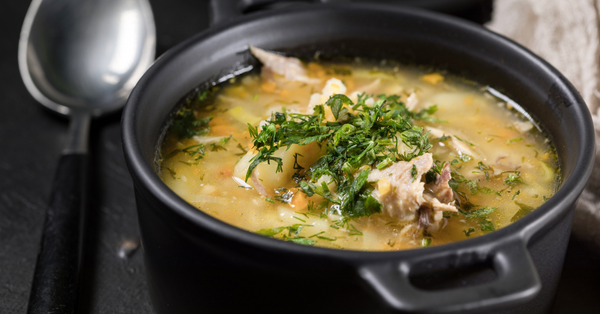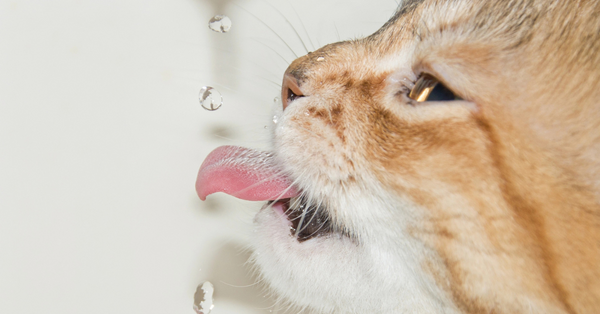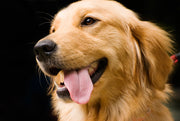5 Simple Tips to Make Sure Your Cat Drinks Enough Water

Cats are known for being independent, but when it comes to hydration, they often need a little extra help. Many cat owners don’t realize that their furry friends can be prone to dehydration, which can lead to health issues if not addressed. Ensuring your cat drinks enough water is essential for their overall well-being, yet it can sometimes be a challenge. Fortunately, there are simple steps you can take to encourage better hydration.
In this blog, we’ll explore five easy tips to keep your cat hydrated and happy so you can rest easy knowing your pet is getting the care they need. Let’s dive in!
1. Opt for Wet Food
Ensuring your cat stays hydrated is crucial for its overall health, and one of the easiest ways to increase its water intake is by incorporating wet food into its diet. Unlike dry food, which contains minimal moisture, canned cat food offers about 70% and 80% water content, helping cats maintain proper hydration levels. If your cat doesn't naturally drink water often, offering wet food can make a significant difference.
Additionally, placing multiple water bowls throughout your home or even adding a few ice cubes to your cat's water bowl can encourage your cat to drink more. For cats that prefer variety, try adding a splash of tuna juice or low-sodium chicken broth to their water to stimulate further drinking. Keeping an eye on your cat’s hydration is important for preventing issues like kidney disease and promoting overall well-being.
Benefits of Wet Food
Wet food provides your cat with essential nutrients and more moisture than dry food. This is especially beneficial for cats with health issues like kidney disease, diabetes, or urinary tract conditions. It also helps prevent problems like low energy, weakened organ function, poor skin health, and the risk of urethral blockages.
A shortfall in water consumption by cats can precipitate numerous severe health complications, including:
- A state of dehydration
- Infections within the urinary tract system
- Kidney-related illnesses
- Formation of bladder crystals
Adding wet food to your cat's diet helps increase its water intake. If your cat doesn't drink enough water from its bowl, eating wet food is a great way to ensure it stays hydrated.
How to Transition from Dry to Wet Food
Transitioning your cat from dry to wet food should be done gradually to avoid digestive issues. Start by mixing wet food with regular dry food, increasing the wet food over time. Ensure the food is at room temperature, and consider adding low-sodium chicken broth or tuna juice for added appeal. Monitor your cat’s reaction and consult a vet if necessary.
A wet food diet helps increase your cat's water intake, which is essential for hydration and preventing kidney disease. Provide fresh water in multiple bowls, consider water fountains, and add ice cubes to make drinking more enticing. Observing your cat's hydration levels and maintaining these habits promotes better health and hydration.
2. Experiment with Water Bowl Types and Locations

Regarding their water bowls, the choice and positioning of your cat’s water bowl can significantly impact how much they drink. Cats often have particular preferences when it comes to their drinking containers. They might favor specific materials or shapes or be more apt to hydrate from a bowl in just the right spot. To promote increased hydration, consider introducing a water fountain or opt for broad stainless steel or ceramic bowls that cater to their material tastes.
Interestingly, some cats prefer shallow bowls, making drinking more fun and engaging. Elevating these bowls a few inches can encourage them to drink more. By placing water bowls in various spots around your home, you tap into your cat's love for exploring and provide more options for them to stay hydrated.
Material Options
Stainless steel and ceramic materials are typically the top choices for your cat’s water and food bowls. Stainless steel's merits lie in its robustness, simplicity in cleaning, and resistance to retaining odors or residues from previous meals. Its non-porous surface also prevents bacteria from seeping in.
Meanwhile, ceramic options provide a touch of elegance that can complement interior designs. However, they must be handled carefully since they are prone to chips and cracks where harmful bacteria may increase.
In contrast, despite being budget-friendly and light in weight, plastic bowls have drawbacks, such as their tendency to absorb bacteria and unpleasant smells because they’re porous. Plastic has been known to induce chin acne among cats.
When selecting a bowl for your cat’s hydration needs, prioritize those crafted from safe stainless steel or ceramic, which are conducive not only aesthetically but also hygiene-wise as these types remain pristine even after cycles through the dishwasher—making them an excellent choice for maintaining your cat’s well-being.
Ideal Placement
Choosing the right water bowl and its placement for your cat is essential. Cats enjoy drinking in quiet areas away from the hustle and bustle of household activities. Placing the water bowl peacefully encourages your cat to drink more often. Additionally, it's best to have separate areas for their food and water bowls.
To encourage your cat to drink more, place multiple water bowls around your home, away from their food and litter boxes. Cats are naturally curious. Water bowls in various locations can tap into this curiosity, leading to more frequent water intake.
3. Enhance the Water's Appeal

Like humans, cats have specific preferences in their drinking choices. While some felines might snub tap water, they may gladly sip on filtered or bottled varieties. Enhancing the flavor of the water promotes greater fluid intake in your pet. Infusing it with palatable tastes such as low-sodium chicken, beef broth, and tuna juice could tempt your cat to drink more.
The temperature of the water is also a significant factor influencing a cat’s willingness to drink. Certain cats are partial to cool water, whereas others don’t mind if it’s at room temperature. Introducing a few ice cubes into their bowl offers an enjoyable and refreshing indulgence for your pet during warmer times of the year.
Flavor Additions
Enhancing the taste of water can be an appealing way for cats to drink more. You might consider:
- Infusing the water with a bit of tuna juice
- Incorporating flavor by adding low-sodium chicken or beef broth
- Mixing in just a few drops of unsalted chicken or beef bouillon into their drinking water
Temperature Preferences
Like people, cats have their own likes and dislikes regarding how cool they prefer their water. On sweltering summer days, several felines may find water more appealing if it has been cooled with a handful of ice cubes from an ice cube tray.
Cold water isn’t the preference for every cat. Some prefer their drinking water at ambient temperature. It’s essential to pay attention to your cat’s hydration patterns and tailor the temperature of their water to promote increased consumption.
4. Utilize Water Fountains
A water fountain can help your cat drink more water by appealing to its love for fresh, flowing water, much like streams in the wild, which are cleaner than still water. These fountains attract cats to drink more, which keeps them hydrated.
Providing fresh, clean water with a fountain supports your cat's health. Cat water fountains are designed to be quiet, energy-efficient, and have large water tanks, making life easier for busy pet owners. The moving water stays fresh and encourages your cat to drink regularly.
Choosing the Right Fountain
When selecting a water fountain for your feline, consider the pump’s noise level, the ability to control the flow of water, and whether there is a filtration system that can be replaced. Cats usually prefer a quiet and steady flow of water. Choosing a fountain that mimics this environment could encourage better hydration.
Additional considerations when picking out a cat fountain include:
- A design with multiple levels suits homes with several cats or those with preferences for different drinking positions.
- Opting for materials such as ceramic might be more in line with what some cats prefer.
- Ensure you select a water fountain that will undoubtedly delight and satisfy your cat’s specific tastes and needs.
Maintenance and Cleaning
Keeping your cat's water bowl or fountain clean is essential, just like picking the right one. Cats are picky and might only drink if it's clean enough. Cleaning regularly is important to ensure your cat has a fresh place to drink.
If you use a water fountain for your cat, clean parts like the spout and motor often to stay hygienic. Following a cleaning schedule helps keep the drinking area clean, makes the fountain work well, and encourages your cat to drink more water.
5. Monitor Your Cat's Hydration Levels

Keep a close watch on your cat’s hydration level, as their well-being depends on it. Inadequate water intake can result in significant health complications for cats, such as low energy levels and compromised organ function. For every 5 pounds of body weight, felines should consume roughly 3.5–4.5 ounces of water daily. Maintaining adequate hydration is key.
Although cats tend to be more resistant to dehydration compared with dogs due in part to their evolutionary origins in arid environments, they are still at risk for issues like urinary difficulties and constipation if not properly hydrated. Cats already contending with other medical conditions may have an increased vulnerability to the effects of insufficient fluid intake and thus require careful observation for signs indicating a water shortage.
Signs of Dehydration
It is essential to know the indicators that your cat may be dehydrated. Dehydration symptoms in cats can range from mild to severe. Watch for early signs like tiredness, reduced appetite, and panting, which may indicate your cat needs more fluids.
In more critical cases, you might observe that your cat’s gums have a sticky or tacky texture, and their eyes appear sunken and dull. Upon identifying any signs of dehydration, it’s imperative to ensure immediate access to water for your feline companion and seek veterinary assistance when required.
Ensure Your Cat's Health Through Proper Hydration
Hydration is essential for many aspects of your cat’s health—it facilitates digestion, allows efficient absorption of nutrients, and helps manage body temperature. Neglecting proper hydration can result in severe health complications. It’s important to ensure that your cat consumes enough water. By applying these recommendations consistently, you’ll support your four-legged companion in remaining well-hydrated and vibrant in health.
For top-notch solutions to keep your cat well-hydrated, consider Petmate's range of high-quality cat products. Explore our selection and find the perfect hydration solutions for your cat today.
Previous article

Related posts
View all-

What Can You Use Instead of Cat Litter?
Traditional cat litter is convenient, but it’s not the only option. Many cat owners look for alternatives to reduce waste, save money, or avoid chemicals found in clay-based kitty litter. Some options offer better odor control, while others are more eco-friendly or gentler on a cat’s paws.
Read Article -

How to Keep My Backyard Smelling Fresh
A clean backyard should smell fresh, unlike pet waste, smoke, or mold. Bad smells can linger, especially when dog poop, urine, or food scraps attract flies and bacteria. If your yard has a foul odor, it's time to take action. The first step is cleaning up pet feces, trash, or rotting food. A garden hose can wash away dirt and urine from artificial turf, patios, and decks. To neutralize odor, Use baking soda, white vinegar, and essential oils.
Read Article -

What Supplies Do First-Time Cat Owners Need?
Bringing home a new cat is exciting, but making them feel safe and comfortable takes more than love. First-time cat owners must prepare with the right supplies to ensure a smooth transition. From a litter box to cat food and a warm bed, having the basics ready can help your new kitty settle in faster. This guide covers everything a new cat owner needs to make their new pet feel at home.
Read Article





